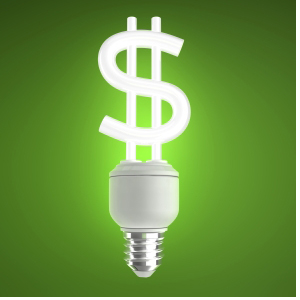
Being energy efficient can seem costly if your options seem to be limited to solar power and rainwater harvesting systems, but making a few changes around the home can mean dropping bills and giving the environment a little bit of a boost.
Buy the right utilities
Making sure you have the right utilities is going to pay-off wonders when looking to make a home more energy efficient.
Each type of utility, a washing machine, tumble dryer and even microwave will have an energy efficient rating. Generally these go from A to G, with some utilities moving up to an A+++ rating; either way, the higher the energy efficiency rating, the less water or electricity it will use to get the job done and the better it is for the environment.
Having a fully equipped energy efficient kitchen could result in household bills dropping by up to 100 a year.
Install insulation
Insulation can cost up to 300 to install, whether in the roof or the walls. However, ensuring that it is installed can drop heating bills by around 200 a year, so in a couple of years, it’ll have paid for itself.
Having an insulated roof and wall may help in reducing the amount of air that escapes from your home. It might also ensure that the warmth stays inside, reducing the need to turn the heating up to the full blast. During harsh winters, you may just need to call professionals from the companies like Albert Culver Co. to install a heating system in your home, and the heat may not escape your room so that you can relax comfortably inside your house in the cold weather.
Cavity wall and loft insulation work by trapping heat within the home meaning that heating can be on a lower level. You can also get this done for commercial properties, as well through investing in something such as Commercial Foam Insulation, or maybe an eco-friendly version if that was more to your suiting. Which may help to lower overall costs on bills in both types of properties.
Some energy companies will also offer free installation for any households deemed to be ‘vulnerable’. This could be low-income families or the elderly, as well any introductory offers that also include installation.
In addition to insulation, you could also use energy-efficient installations like heat pumps from a Heat Pump Supplier like Sprsun. A heat pump reduces carbon emissions, has lower running costs, and requires little maintenance, therefore it is also important to mix insulation with heat solutions for the best money-saving methods.
Make sure your windows are sealed
Sealed windows are another way to trap heat within the home. Even the smallest gaps, maybe not noticeable to the untrained eye, are going to let in a breeze and result in heating being turned up, costing more and ultimately escaping the house in the end anyway.
Sealing a window needn’t be expensive and the seals themselves can be bought from any decent DIY shop and normally cut to fit the size of a window.
Cut down your shower time
Cutting down the time you spend in the shower and getting rid of baths altogether is great way to save money and energy on a number of levels.
The more you use an electric shower the more it is going to cost in the long run on your energy bills, cutting a ten minute shower to a five minute shower is going to halve this cost.
Anyone using a water meter can save money by simply using less water, so cutting out baths, probably the biggest reason for water use, is the best way to do this.
Keith Hodges is a financial journalist writing news and advice articles on how to cut your bills and stretch the family budget at CashCompass.co.uk.








